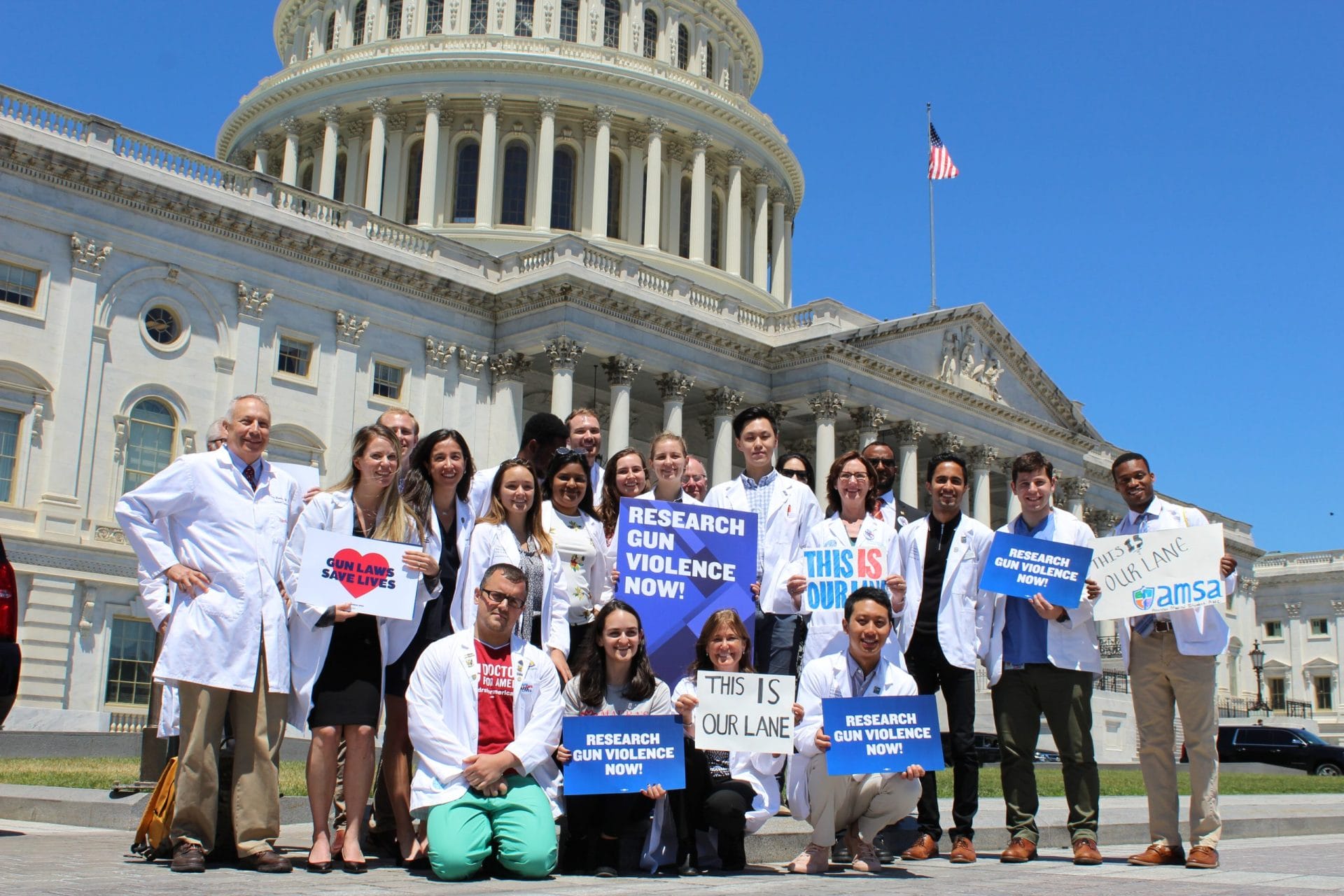
Here Are the Gun Violence Research Projects the CDC Is Funding
The 25-year federal funding drought is finally coming to an end.
For more than 25 years, there was virtually no federal funding for gun violence research.
In fact, researchers have estimated that gun violence received less than 2% of the federal research funding it would be expected to receive based on the scope and toll of the problem—with an average of 38,000 Americans shot and killed each year. This dearth of research has severely limited what is known about the causes and consequences of the gun violence epidemic, and has limited the evidence base for effective policy solutions.
Gun Lobby Blocks Research Into a Crisis
The lack of research funding was fueled by a provision known as the Dickey Amendment which has been included in annual appropriations legislation since 1997 at the direction of the gun lobby. The provision prohibits the use of federal funds to advocate or promote gun control. In the same year the amendment was introduced, Congress earmarked $2.6 million of the Center for Disease Control’s (CDC) budget, which was the amount spent on firearm injury research during the previous year, to go to the study of Traumatic Brain Injuries. Congress was sending a clear signal to discourage any further research into this public health crisis, and CDC and NIH heard them loud and clear. Federal gun research virtually froze.
The Dickey Amendment does not legally prohibit research from taking place—the lack of funding does. In recent years, that understanding has become more widespread, with the original author of the amendment expressing his opinion that gun violence research should resume after the 2012 Sandy Hook shooting. In 2018, Congress clarified that the CDC has the authority to conduct research on the causes of gun violence, and CDC Director Robert Redfield said that the institution was “poised to be able to do the research in this area if Congress chooses to give us additional funding.”
Federal Research Saves Lives
We know that we need good research to craft good policy—we’ve tackled other public health issues with data and research and the same can be done for gun violence. After investing significant and sustained funding in research, scientists and engineers were able to identify risk factors for motor vehicle crashes. In response to these findings, automakers introduced new safety features and Congress passed the Highway Safety Act in 1966, which included laws to prevent people from driving while intoxicated and to discourage underage drinking. As a result, car-crash deaths per mile driven fell by more than 80% since the 1950s.
Making History Requires Fighting
In order to address the severe lack of funding for gun violence research, Giffords rallied with courageous politicians and medical professionals in Denver, Orlando, and New Orleans. We sent multiple letters to congressional leadership. In 2016, we organized the last four Surgeons General to call on Congress to properly fund this public health research.
Bipartisan Group of Former U.S. Surgeons General Call on Congress to Invest in Federal Gun Violence Research
Apr 13, 2016
These efforts, as well as the leadership of Democrats in the House of Representatives, paid off last year. The Fiscal Year 2020 Labor, Health and Human Services, Education, and Related Agencies appropriations bill included $25 million for gun violence research, to be split evenly between the Centers for Disease Control and Prevention (CDC) and the National Institutes of Health (NIH).
Last week, the CDC made a historic announcement of the first round of funded projects that will be completed with these new monies. These 16 funded projects are slated to be completed over the next two to three years and will provide new data and information on multiple aspects of our country’s gun violence epidemic. While this is just the beginning of making up for all of the time that’s been lost, these projects represent a promising foray into this critical topic:
- Four of these projects specifically seek to better describe the scope and specific interventions to prevent firearm suicide. For example, researchers at the Henry M. Jackson Foundation were funded to study the association between firearm behaviors and suicide risk in Army soldiers and veterans.
- Another four projects seek to augment what is known about community gun violence in economically disenfranchised neighborhoods in American cities and seek to expand our understanding of community-based violence intervention programs. One of these projects supports researchers at Virginia Commonwealth University to conduct a randomized controlled trial of hospital-based violence intervention programs, which previous research has shown to be remarkably effective at preventing violence among high-risk individuals.
- At least five projects specifically examine the impact of gun violence on children and adolescents. One funded project will allow researchers at the University of Washington to study the context, antecedents, and consequences of hand gun carrying among adolescents who reside in rural communities, which can in turn provide evidence for prevention measures.
- Other funded projects seek to better understand the attitudes and practices of gun owners and evaluate the impact of gun ownership on the effectiveness of gun safety policies.

Guns are the most common method of suicide
Source
Centers for Disease Control and Prevention, Wide-ranging Online Data for Epidemiologic Research (WONDER), “Underlying Cause of Death, 2018-2023, Single Race,” last accessed February 3, 2025, https://wonder.cdc.gov/.
Each of these studies will help guide our efforts to keep families, schools, and communities safe from gun violence. With more research on gun suicide, we will have new insights in how to prevent these deaths which currently constitute nearly two-thirds of the nation’s gun deaths.
With more research on community gun violence, we can better address the unjust disparities that make it ten times more likely that a Black American will be killed in a gun homicide compared to a white American. And with more research on gun violence among children we can enact policies to protect children from what is currently the second-leading cause of death among youth.
Importantly, however, this new research is just the first step—we have 20 years of lost time to catch up on. We’ll continue to fight for progress until gun violence is treated like the public health epidemic that it is—and it is crucial that our elected leaders do so as well.
GET THE FACTS
Gun violence is a complex problem, and while there’s no one-size-fits-all solution, we must act. Our reports bring you the latest cutting-edge research and analysis about strategies to end our country’s gun violence crisis at every level.
Learn More